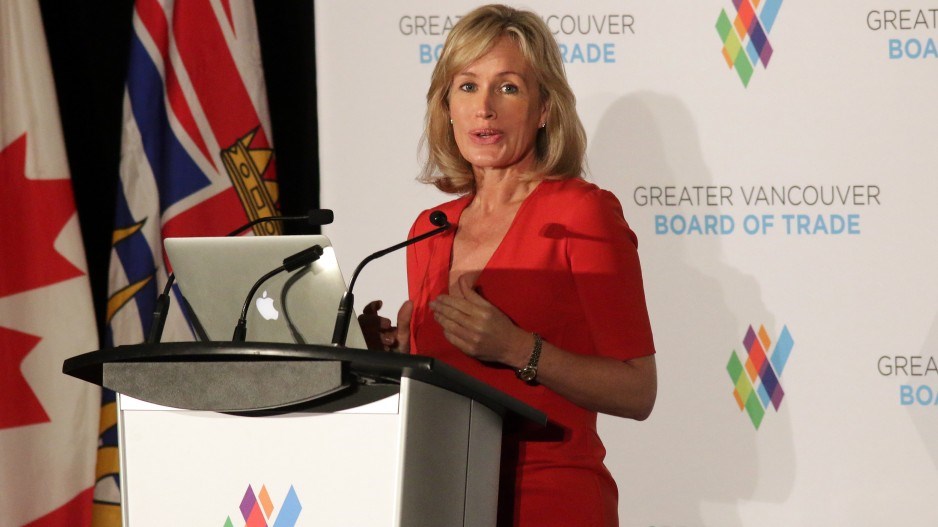Businesses in B.C. will no longer have to pay tiered hydro bills, but residential customers will.
This week, the BC Utilities Commission approved BC Hydro’s plan to scrap a tiered system for commercial customers but keep a two-tiered rate design for residential customers.
Commercial customers will pay a single rate, whereas residential customers will continue to have to pay two different rates.
The two-tiered rate system was implemented in 2008. It was intended to encourage energy conservation. Customers pay a certain rate per kilowatt hour for their electricity to a certain level. Past that level, the price per kilowatt hour goes up.
After speaking to the Greater Vancouver Board of Trade Tuesday, January 24, BC Hydro CEO Jessica McDonald explained the rationale for scrapping the tiered rate design for business customers.
She said the tiered system for commercial users has not had the same impact on commercial customers as it has on residential, who understand the two-tier rate, pay attention to their hydro bills and take steps to lower their energy consumption.
Commercial customers, it appears, either don’t understand it, or can’t be bothered to take the steps necessary to lower their power consumption.
“When we looked back at what the actual influence had been on consumer behaviour, it hadn’t made any impact in terms of the commercial user,” McDonald said.
“What we found for commercial users is that there just is too much diversity among the commercial customers themselves. You can’t generalize about the kinds of choices that a commercial business could actually make to save energy and the system was far too complicated for them to take in into account.”
Asked if it was fair for residential customers to have to continue paying a higher rate for overuse when commercial customers won’t, McDonald said “there are more questions that we have to look at in terms of rate design for residential customers.”
Hydro rates have gone up substantially in recent years to the point that BC Hydro itself is expecting some rate shock from its customers, thanks to an unusually cold winter.
It recently offered a deferral program that will allow residential customers facing massive winter power bills to spread their payments over several months.
But given BC Hydro’s massive capital spending plans, it seems unlikely that BC Hydro will be able to take steps to lower electricity rates or keep them in check.
As Moody’s recently pointed out, BC Hydro has been amassing a massive amount of debt over the past decade. While the credit rating service recently affirmed B.C.’s Triple AAA credit rating, it warned that BC Hydro’s debt-to-equity ratio could jeopardize that rating.
BC Hydro’s debt has soared by $10 billion in the last decade, from $8 billion in 2008 to $18 billion in 2016, and is expected to continue to grow by $20 billion over the next decade.
McDonald said BC Hydro’s 80-20 debt-to-equity level is no different today than it was back in the 1990s.
“Having said that, the government has recently, a couple of years ago, made the decision to phase out our dividend requirement and not bring it back in until BC Hydro reaches a 60-40 debt-to-equity level,” she said.
She referred to the hundreds of millions of dollars that the B.C. government requires BC Hydro to pay every year in dividends – a practice that has been criticized by the NDP and a former Auditor General as the reason BC Hydro has used deferral accounts and borrow from the future to create profits that don’t actually exist in order to pay the annual dividends.
The B.C. government has sworn to wean itself of those dividends.




